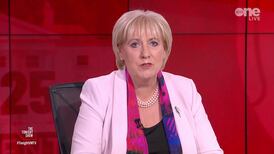LEVELS OF E.coli contamination in Irish drinking water supplies are almost 30 times higher than those found in supplies in England and Wales, according to an Environmental Protection Agency (EPA) report published today.
The report on drinking water quality identifies one-third of all public water supplies as potentially risky to human health and requiring replacement or upgrading.
Some 320 out of 952 water supplies appear on the agency’s remedial action list. This is a marginal improvement since the list was drawn up 18 months ago, but the EPA says it is not satisfied with the progress made by local authorities in upgrading treatment plants.
For example, just seven of the 64 supplies identified in 2007 as having no treatment barrier to remove cryptosporidium had installed one since the outbreak of the parasite in Galway that year.
About 5 per cent of samples taken from public water supplies were contaminated with E.coli bacteria. Almost 90 per cent of the population gets its water from public schemes.
Over 31 per cent of samples from private group water schemes reported E.coli at least once during 2007.
The report says that boil-water notices were put in place on 53 supplies serving 118,000 people last year. The EPA issued 47 binding directions to 15 local authorities in relation to remedy water treatment faults
Once local authority Galway Council Council was prosecuted for failing to install a chlorine monitor and alarm. It was fined €4,000.
Dara Lynott, the EPA’s director of environmental enforcement, said the figures were moving in the right direction but continued improvement demanded ongoing investment in treatment plants.
“We need sustained investment in infrastructure to deliver clean drinking water. Clean drinking water is vital to sustain our health and wellbeing and we rely upon it, particularly those involved in the services, manufacturing and tourism industries. Such investment during these tough economic times will provide the platform for sustainable development into the future.”
He said there was evidence of poor practice in smaller water treatment plants, such as incorrect dosing with chemicals, a failure to check the source of chemicals and inadequate maintenance. EPA audits found problems with filters in two-thirds of treatment plants, and inadequate chemical dosing arrangements in half the plants examined.
Responding to the report, local authority bosses said they welcomed the finding that the vast majority of public water supplies were in compliance with standards. “Consumers can be reassured that tap water is of consistent good quality,” Eddie Sheehy, chairman of the County and City Managers’ Association, who added that a new system of prioritising investment for water treatment was required.
The report says 0.55 per cent of public water supplies were non-compliant for E.coli; this compares to 0.02 per cent in England and Wales. However, non-compliance rates vary greatly between larger supplies (just 0.15 per cent) to small supplies (1 per cent, or 50 times the overall rate in England and Wales).
The EPA says about half the water used to supply businesses and homes leaks out into the ground before arriving at its destination. Since the figure for Dublin is around the international norm of 28 per cent, this means leakage figures in the rest of the country are far higher.
High leakage rates cost money, he pointed out, as treatment plants reach capacity and need to re-invest more quickly.
Mr Lynott said it wasn’t in the agency’s remit to express a view on water charges but he added: “We have to incentivise good behaviour and penalise bad behaviour.”







